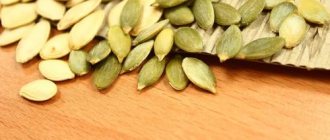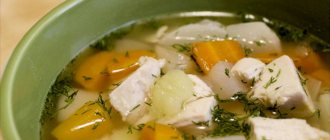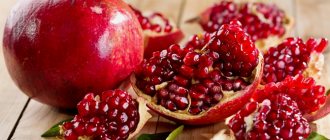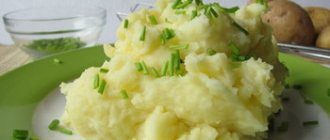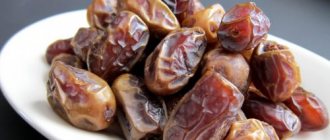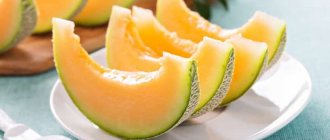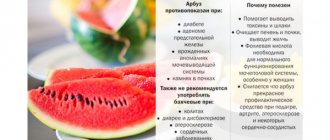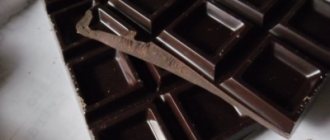Due to inflammation of the pancreas, patients must adhere to a special diet. Any sweets, from the point of view of medicine and proper nutrition, are harmful, but many are interested in whether it is possible to introduce any desserts into their diet. To slightly diversify a strict menu for pancreatitis, you can eat some sweets, for example, marshmallows and marmalade. The main thing is to follow the norm and be attentive to your body.
Sweets during an exacerbation
Marmalade or marshmallows for pancreatitis contain sugar, which, acting on the pancreas, can cause painful spasms, bloating and fermentation processes. The same applies to products based on sweeteners; they contain refined carbohydrates, which are prohibited during the diet.
When an acute form of inflammation manifests itself or chronic pancreatitis worsens, any sweets are prohibited. During this period, to stabilize the condition, strict restrictions are imposed on the diet. Violations of nutritional rules are fraught with deterioration in health.
Marshmallow for pancreatitis
Is it possible to eat marshmallows if you have pancreatitis? This question is often asked by all those with a sweet tooth who have been diagnosed with inflammation of the pancreas, and even in this case they are not ready to give up sweets. As many doctors and patients note, sweets for inflammation of the pancreas are a rather useless product and, even more so, can be dangerous, but as for such a dish as marshmallows for pancreatitis, many note its benefits. What are its benefits and harms for pancreatitis - we will consider further.
The benefits of sweet marshmallows.
First of all, it is worth saying that marshmallows for pancreatitis are indicated by doctors as an integral part of a dietary food product. This delicacy is marked with a low calorie content - 100 grams. marshmallows contain only 260-330 calories, there are no fats that will burden the pancreas. At the same time, the natural pectin included in it helps remove toxins and waste, normalizes the functioning of the gastrointestinal tract and strengthens the immune system.
Zephyr and pancreatitis.
As doctors note, any marshmallows during the period of exacerbation of the pathology are strictly prohibited from being included in the diet menu and therefore should be abandoned. This is due to the high sugar content in it, and this is an unnecessary burden on the pancreas and is therefore not suitable for dietary nutrition, provoking fermentation and bloating, flatulence.
Whether marshmallows are allowed for pancreatitis - it all depends on the stage of the inflammatory process affecting the pancreas. So, during an exacerbation, marshmallows should be excluded from the diet and this decision of doctors is due to the following points:
1. An inflamed pancreas is not able to produce a special enzyme, insulin, in sufficient quantities and break down excess sugar in the blood.
2. An increase in glucose in the blood leads to intoxication of the body and the occurrence of attacks of nausea and vomiting against this background.
3. An excess of carbohydrates in the body provokes the appearance of belching and excessive flatulence.
During the period of remission, marshmallows can be introduced into the diet - no earlier than 2-3 months after the last attack. In this case, it is worth considering the general condition of the patient and his individual glucose tolerance. In this case, you should start with half or a quarter of marshmallows and gradually increase to 1-2 pieces per day. The main thing is not to use marshmallows coated with glaze, which contains nuts and chemical dyes.
When choosing marshmallows, check the storage conditions and expiration dates, and the presence of preservatives in it. The thing is that marshmallows basically contain egg whites and sugar - and this is a very nutritious environment for pathogenic microflora, which will only worsen the patient’s health, as well as a large number of chemical additives. If you doubt the quality of marshmallows purchased in stores, you can make this sweet dessert yourself.
Recipes.
1. Apple.
To prepare it you will need 600 g. sweet and sour varieties, preferably green apples, whites of 2 eggs and 3 tsp. agar-agar, then you will need honey, preferably fresh - 2 tbsp and 100 ml will be enough. water.
In accordance with this recipe, agar-agar is pre-soaked in cool water for no more than half an hour, but in the meantime it’s worth peeling the apples and removing the core and seeds. They should first be baked in the microwave or oven for 3-5 minutes, beating the pulp in a blender, adding previously soaked agar-agar and honey.
The resulting mass is poured into a saucepan and then brought to a boil on the stove, turning on low heat - just a few minutes and the product is ready. Allow the mixture to cool and place in the refrigerator overnight.
2. Banana marshmallows.
To prepare it, you should take 250 grams. Banana puree is approximately 2 medium-sized fruits, 250 and 470 g. fructose and a pinch of vanilla, also 8 grams of agar-agar and 150 ml of water, the white of one egg.
Homemade marshmallows obtained according to this recipe turn out to be very fragrant and tender, and almost everyone will like the exotic taste of banana. At the very beginning of preparing the banana aromatic delicacy, soak agar-agar in cold water for about 10 minutes, no more.
Then pour the water with agar-agar into a bowl and bring it to a boil, add 470 grams of fructose into it in small portions and simmer over low heat for 7-8 minutes, remembering to stir it constantly. When preparing homemade marshmallows at home, using agar-agar in the recipe, it is important to carefully monitor the syrup. In particular, the latter should not crystallize and at the same time not become covered with a crust and become multi-layered during cooking. If the syrup is cooked correctly, it will have a little white foam and if you scoop it with a spoon, it will flow down into a thin thread.
When the syrup itself is cooked, you should move on to working with the banana puree itself. Simply grind the bananas in a blender until smooth, without lumps, and add the remaining 250 grams to it. fructose, beat everything in thoroughly. After this, add half an egg yolk to the mixture, which is beaten with a mixer until white foam.
Next, pour the rest of the protein into the mass and beat again with a mixer, pour in a thin stream of sweet agar-agar syrup, and at the very end, you can optionally add a few drops of rum, which goes well with the banana aftertaste. When the mass is ready, it is placed in the refrigerator to harden, and when it thickens, it is squeezed onto parchment using a pastry syringe and allowed to harden for at least 24 hours. When the marshmallows have hardened, remove them from the parchment and glue them in half, sprinkle with sugar, and place them in an airtight container.
Classic marshmallow recipe.
To prepare this classic dietary marshmallow recipe, take egg white and powdered sugar, apple or pear puree, a gelling component - this can be agar-agar made from seaweed, or gelatin, plus a few drops of lemon juice.
It is prepared according to the apple marshmallow recipe described at the very beginning of the marshmallow recipe - this composition does not contain fats, but there is enough iron and phosphorus, which has a beneficial effect on the condition and functioning of the pancreas. It also helps lower bad cholesterol levels and remove toxins from the body, strengthening the immune system.
Consumption rates during remission
Two months after attacks of exacerbation of pancreatitis, marshmallows can be introduced into the diet in small quantities. The product is introduced gradually, starting with a quarter of a piece. Then it is permissible to methodically increase portions to 1 - 2 pieces per day. It is highly not recommended to consume the entire amount at one time; it must be divided throughout the day in equal portions.
Marmalade for pancreatitis is allowed only after three months; it is better to start with small pieces and consume it only in the morning. Later, the portion of dessert can be increased, but the daily norm should not exceed four standard pieces. It is optimal to eat two pieces of marmalade per day.
Expanding the menu during the stabilization period has a positive effect on a person’s emotional state. In addition, sweets also contain some useful substances, for example, marshmallows are rich in protein, and marmalade is rich in pectin.
Before increasing your daily intake of dessert, you should pay attention to the body’s reaction. The basic diet allows the consumption of marmalade or marshmallows for pancreatitis, but does not take into account the individual characteristics of a person. If the body reacts negatively to a particular product, it needs to be eliminated from the diet.
Features of use
Marshmallow is one of the foods allowed for pancreatitis, but not every form of pathology can consume the treat. Those patients whose doctor has allowed them to include marshmallows or marshmallows in their diet should follow the daily intake. If 1-2 pieces a day do not cause harm to the inflamed organ, then a larger amount can complicate the course of the disease.
We recommend reading: Rules for using turmeric for pancreatitis
In the chronic stage
Boiled sugar products should be included in the diet gradually, starting with a small amount - 1/4 of the product. If the patient does not feel any negative sensations, then he can gradually increase the dose, bringing it after 1-2 months to 1-2 pieces per day. It is better to eat marshmallows with unsweetened tea.
During remission of chronic
During the period of remission, the patient can allow himself to eat marshmallows in small quantities. The daily norm is determined individually.
You should not eat treats with various artificial additives and chocolate coating.
Its shelf life will help determine how natural a product is sweet.
For pancreatitis, it is recommended to prepare marshmallows yourself.
With natural marshmallows, it cannot last long, since the product is based on chicken egg whites, in which dangerous bacteria quickly multiply. It is necessary to comply with the storage conditions for the treats.
For pancreatitis, it is recommended to prepare marshmallows yourself, but the choice of ingredients should be approached carefully.
So, you can only take eggs that have been sanitized.
If, with chronic pancreatitis in remission, there are disturbances in the functioning of the beta cells of the pancreas, then the doctor may recommend marshmallows based on a sweetener or fructose.
During exacerbation of the disease
During an exacerbation of chronic pancreatitis, all sweets are excluded from the menu. This is due to the fact that the inflamed organ cannot produce enough enzymes that are responsible for the body's absorption of glucose. As a result, blood sugar rises and intoxication begins, leading to an increase in the inflammatory process.
The patient suffers from nausea, vomiting, and pain, which will require medication to relieve. A large amount of carbohydrates causes flatulence and belching, which negatively affects the patient’s health. The course of the disease worsens. Refusal of sweets, including marshmallows, during an exacerbation of pancreatitis is an indispensable condition for the treatment of pathology.
We recommend reading: Is it possible to eat pumpkin seeds if you have pancreatitis?
Rules for choosing sweets
Despite the fact that both marshmallows and marmalade can be added to the menu, the products must be chosen correctly.
- Marshmallows should be without chocolate glaze and fillers (for example, nuts). The composition should include, to a minimum, various preservatives, thickeners and dyes. It is better to make a choice in favor of a domestic manufacturer.
- It is better to prepare marmalade yourself; the recipe does not involve any special difficulties. The basis for homemade marmalade is the fruit juices of sweet apples, berries, and citrus fruits. Depending on the sweetness of the fruit, you can add a small amount of sugar, but this is not necessary.
- Store-bought dessert contains many artificial thickeners, but it is acceptable to choose packaged (not loose) marmalade in light colors: pale yellow or pale orange.
- Any types of ready-made chewing marmalade are also prohibited; they have little in common with real marmalade and contain too many artificial additives.
Symptoms of the disease
Symptoms of acute inflammation of the pancreas are more pronounced. In the chronic form, the signs are often erased, but longer lasting. To confirm the diagnosis, ultrasound, laparoscopy and FGDS are performed, as well as a blood test for amylase and a urine test for diastase.
Okunev Dmitry Yurievich
doctor – therapist • doctor – ultrasound diagnostics
Pancreatitis is often accompanied by type II diabetes, gastritis and gastroduodenitis. Our gastroenterologists will give nutritional recommendations over the phone, tell you what to look for and what pathologies to check for when diagnosing the underlying disease.
Online consultation
The benefits of marshmallows and marmalade
Marshmallow is considered the most healthy dessert; it contains protein, sugar, as well as B vitamins, PP and other useful substances. Protein helps restore pancreatic cells, pectin helps the body get rid of toxins and lower cholesterol levels, and agar-agar contains a lot of natural iodine and iron.
Marmalade may only be allowed to be natural or as close to it as possible. Such sweets can be produced in different ways: based on pectin, gelatin or agar-agar. The first one is the most useful due to its high content of dietary fiber; in addition, pectin gently stimulates intestinal function and peristalsis.
What is pancreatitis
Pancreatitis is an acute or chronic inflammatory disease of the pancreas. This leads to the fact that the enzymes it produces do not enter the intestines, but remain in the gland itself. Because of which she begins to digest herself. In some cases, its contents enter the blood or abdominal cavity and lead to damage to other organs.
The main causes of the development of the disease are toxic poisoning, infectious diseases, injuries, parasites, various congenital and acquired pathologies of the gastrointestinal tract and the gland itself. Very often alcohol abuse leads to destructive processes in the pancreas.
The disease is diagnosed based on tests and instrumental studies, as well as on the basis of a characteristic clinical picture. Among the main symptoms of this pathology:
- severe pain in the epigastric region;
- severe vomiting, after which the taste of bile remains;
- obstructive jaundice, which occurs due to a violation of the outflow of bile;
- increased gas formation and bloating;
- bowel dysfunction (diarrhea or constipation).
